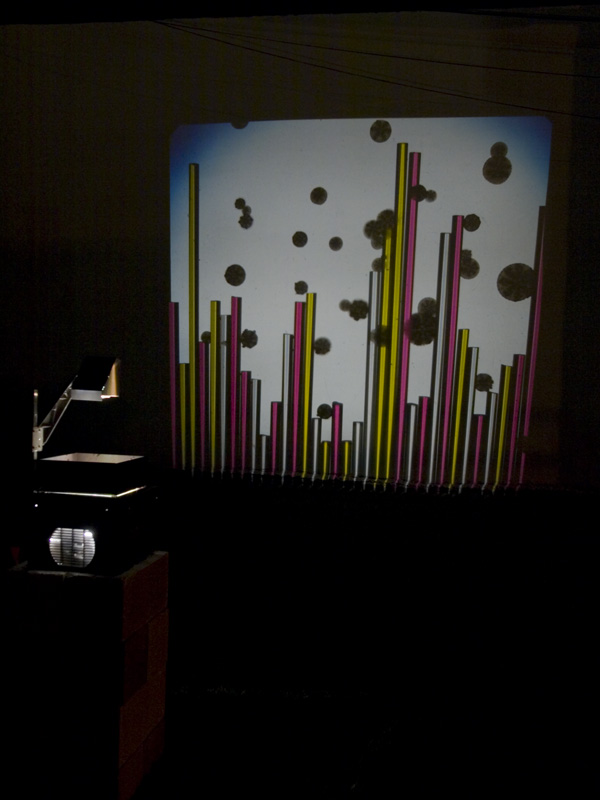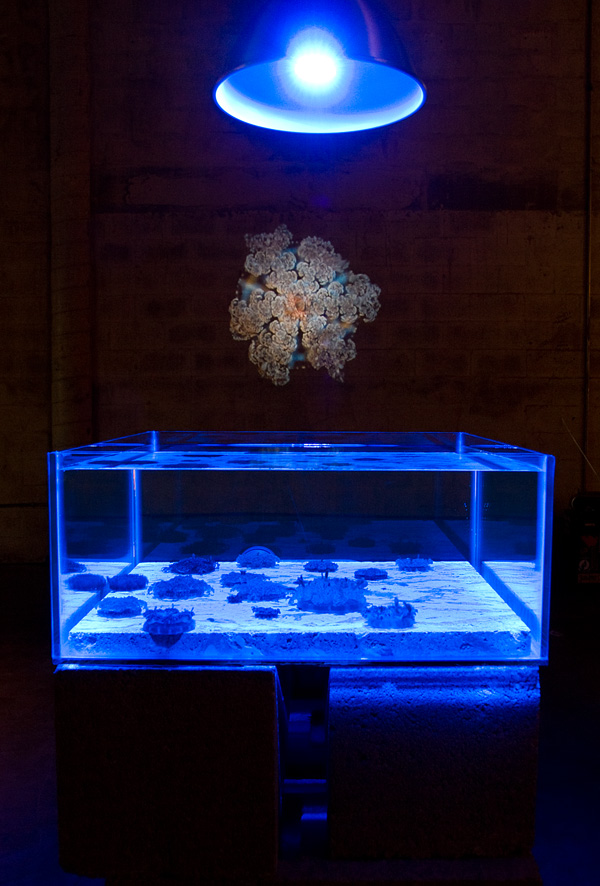‘Hang Four’ – WALLS
Sunday, August 22nd, 2010We were recently commissioned to create the official video for the London/ Paris based electronic music collaboration WALLS, released by Kompakt Records in Berlin. ‘Hang Four’ was premiered on NME.com.
The yellow coral in the opening and closing shots is a sun coral (Tubastrea coccinae). The polyps are seen expanding in reaction to the addition of food to the aquarium. Unlike most reef building corals, the sun coral is non-photosynthetic, and relies on the capture of plankton as its sole energy source. In the Gulf of Mexico and Florida, this is an invasive coral species that most likely hitched a ride into the Caribbean basin following the opening of the Panama Canal. It has since spread northward into the Gulf of Mexico, colonizing oil rigs one-by-one. This particular colony was collected from one of the rigs not far from the BP Deep Horizon disaster about 2 years ago. It is unknown to us whether these corals have been negatively impacted from the spill, but as an invasive species, it raises a number of questions about whether their potential loss should be considered a detriment or not. Nevertheless, research on the impact these sun coral communities have experienced in the Gulf will be useful in determining oil tolerance on a stony coral species in close proximity to the oil disaster.
The iridescent, twinkling gelatinous creatures are called ctenophores (TEEN-o-fores) (aka comb jellies) ranging in size from 5-10mm in total length. They float in the open ocean and beat their rows of cilia (the iridescent, beating ‘combs’) which allows them to filter plankton out of the water. They often float in huge conglomerations of hundreds of thousands. They are an important part of the pelagic (open ocean) community of plankton likely impacted by the oil spill in the Gulf.
The little jellyfish are called ‘club hydromedusa’ (Orchistoma pileus) and range in size from 7-10mm. They also live in the open water near the surface, using their stinging tentacles to capture smaller zooplankton.


